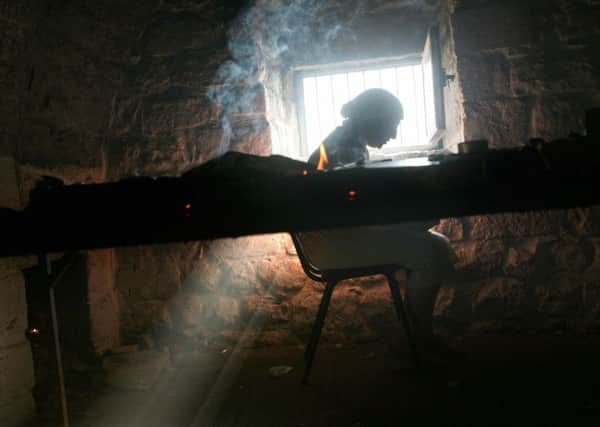Book review: Kabbalah: Secrecy, Scandal And The Soul, by Harry Freedman


The red thread that links all of these is the practice and texts of Kabbalah, and it is a story which Harry Freedman revels in for its complexity and strangeness. It is a book written in a pleasingly light style, but is both detailed and subtle without a clutter of footnotes around it. Its central message is that to speak of Kabbalah – or Cabala in its Renaissance and Christian iteration – as a single thing is a major misunderstanding.
So what is it? Well, it is not one thing. It has been used as a form of personal meditation by which an adept can become close to the presence of En-Sof, the intangible and unknowable supreme God and Creator. This form initially started as a form of Jewish mysticism, and Freedman writes eloquently on how it emerged mostly from the trauma of the destruction of the Temple in 70 AD. It always had a hint of the heretical about it, and many Talmudic scholars held it in some disdain. But, via Spain and in the brief period in which Jews, Christians and Muslims lived together in something like harmony, the idea of Kabbalah migrated to Renaissance Italy and became something entirely different.
Advertisement
Hide AdAdvertisement
Hide AdThe polymathic Count Pico thought Cabala might be a kind of religious genome, to use a modern term, that united all religions, philosophies and even the esoteric mystery texts of Hermes Trismegistus. He also believed that, rather than being a tool for personal devotion, it could be used to influence events on earth; a kind of gamble against God to make Him intervene in the here and now. Hence, it was of interest to the various cranks and kooks of the New Age movement, of whom more anon.
Freedman writes of the medieval years of Kabbalistic study that its practitioners “took advantage of Kabbalah’s flexibility. Kabbalah, like all philosophies, was the product of human reason and ingenuity. Human, novel and rootless, early Kabbalah was far more flexible than any long-established religious tradition”.
It was helped in this, as, unlike the Torah in Judaism, or the Gospels in Christianity, or the Quran in Islam, there was no definitive text. There was one which seems pre-eminent, the Zohar, but they also had the Bahir, from Provence during the time of the Cathars, the Hechalot books, describing “descents” to the Throne of God, the Book Of Formations, the Book Of The Pious, and many other works. So the fissure between individual piety and magical reconstruction of the world could cite chapters and chapters and verses and verses. They could even add to the corpus of Kabbalah literature.
At its core, the essence of Kabbalah seems to be an attempt to understand how a perfect God made an imperfect world. The solution, and this seems consistent throughout the various iterations, is that God retreated – the term used is tzimtzum – to create a void into which the created could become. Creation flowed through ten sefirots, but the sheer energy of creation shattered these vessels and left the good trapped and dispersed on earth.
But it also relied on an ancient phenomenon. In Hebrew – and in Classical Greek, and less so in Latin – letters have numerical values: there was no one, two, three except it was also A, B, C. The Kabbalists thought that by reconfiguring the numerical values of words, names and pronouncements, a secret, deeper meaning might be found. It’s an easy and beguiling game. If you assign the value of 100 to the letter “A”, and 101 “B”… lo and behold, the name Hitler achieves the number 666. But if you assign the values 1 and 47, no dice.
The ending of the book is almost melancholy. A set of beliefs that inspired both reflection and revolution became embroiled in a ghastly snare of chicanery and snake oil. Although the red-thread bracelets and the magic water were bad enough, the part which gave me gooseflesh was the recommendations that one could “scan” writings in Hebrew, without knowing any Hebrew, and somehow fixating on the shapes of the letters would open the gates to knowledge and help you de-stress. Reading without being able to read seems a terrible legacy for a system of thought that prized self-knowledge, study and self-awareness.
This is the kind of erudite, witty, empathetic and sceptical book which gladdens. It also has moments of genuine profundity. Freedman recounts a story about Rabbi Israel, son of Eliezer, who, through Kabbalistic meditation, eventually approaches the gates to the Garden of Eden. He is warned that if he passes through, he must stay there eternally. In Poland, his wife touches his ice-cold body and weeps. At that point, he turns back from Eden and goes back to “the life he was placed on earth to live”. - Stuart Kelly
Kabbalah: Secrecy, Scandal And The Soul, by Harry Freedman, Bloomsbury, £18.99